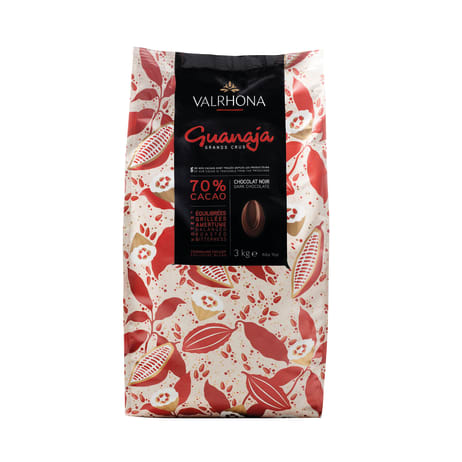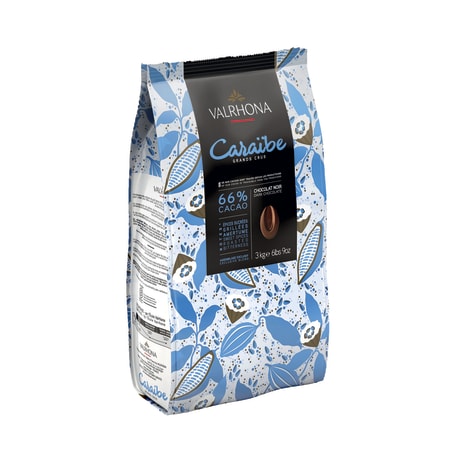La Consigne by Valrhona
An Environmentally Friendly Approach to Reuse
The French AGEC (No-Waste and Circular Economy) and Climate & Resilience laws require companies to manage their waste in a sustainable way. Most of these laws target mass retailing. But at Valrhona, our teams have already been working for several years to develop a circular economy model adapted to chocolate and its customers.
In 2019, with several of its partners and their professional customers, Valrhona launched an innovative scheme that would bulk-deliver chocolate fèves in washable, reusable containers. Returning used packaging is nothing new, so the initiative really marks a return to common sense.
However, very few contemporary industrial and food service operators working outside of the beverage sector have reverted to it because it is such a challenge. By committing to it as an initiative, Valrhona started a movement and reconfirmed its determination to make a positive impact on the world.

Concept
The idea is to improve the customer experience by reimagining the way we package products, taking a circular approach to reuse and assuming full responsibility for our waste. With this initiative, Valrhona wants to power a collective movement that unites the entire industry’s creators within a circular economy, the ultimate aim being to create a more ethical gastronomical world.
This complex, ambitious project takes an “open innovation” approach to step-by-step experiments with customers and various partners, with financial support from ADEME (the French Environment and Energy Management Agency).
The objective is to hit upon a model that overcomes three challenges:
- Reducing operations’ environmental footprint
- Improving the customer experience
- Guaranteeing the project’s economic viability
The Process
The process involves delivering chocolate fèves in 100% recyclable plastic containers that have been made in Europe. These are then collected, washed and reused for new deliveries.
The aim behind the initial trialis to assess the concept’s logistical viability and check that our customers are happy with receiving their goods in reusable containers.
A scheme warmly welcomed by professionals
The scheme’s first participants, all based in Lyon, have expressed their satisfaction and even pride at being part of the change and contributing to a practical, environmentally friendly initiative. They are ready and willing to pursue it and co-create the next chapter in the story with Valrhona.
I’ve found it a lot more practical than bags and it’s a lot better for the environment - Christophe Rasneur, Pâtisserie Les Gasteliers
It’s good for the planet and doesn’t take up any more of my time - Bruno Saladino, Bruno Saladino Chocolatier
I’m interested in avoiding waste and being part of an initiative alongside my industry colleagues and Valrhona - Robert Adam de Beaumais, Maison Buisson
Our results
This innovative initiative for the BtoB food sector was well received by professional customers who tried it out (with a qualitative study in 2022 showing that 82% of users were satisfied or very satisfied).
La Consigne by Valrhona returnable packaging scheme has achieved its primary objective of reducing waste.
The 2023 balance sheet for La Consigne is positive: 2,830 containers sent to customers in France, representing 17 tonnes of chocolate 691kg of CO2 saved 693kg of waste avoided.
But being a pioneer also means shaking up the current business model. To achieve this, Valrhona teams have set themselves new objectives:
- Reduce carbon dioxide (CO2) emissions by increasing container fill and quantities delivered. Valrhona aims to reduce the
need to clean storage bins, which also leads to a reduction in transport requirements.
The lifecycle analysis is currently being updated. - Optimize the production process to reduce labor costs. In 2023, the analyses were completed. Test phase under way to explore this possibility.
In conclusion, our teams are keen to obtain the quantified financial and extra-financial performance results of the circular model, and remain mobilized.




